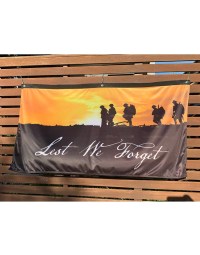Everything You Need to Know About Remembrance Day in Australia

Is Remembrance Day a Public Holiday in Australia?
Remembrance Day, observed on November 11 each year, is a significant day in Australia, but it is not a public holiday. This differs from ANZAC Day, which is a public holiday nationwide.
Despite the fact Remembrance Day is not a public holiday, Australians are encouraged to take part in commemorative activities such as observing a minute of silence at 11am. Schools, workplaces, and public organisations across the country pause to remember those who have served and sacrificed for Australia.
What is the Significance of the Minute of Silence?
The minute of silence at 11am on Remembrance Day is observed not only in Australia but in other Commonwealth nations. It marks the exact time when the hostilities of World War I ended "at the 11th hour of the 11th day of the 11th month" in 1918.
The symbolic act of a moment's pause honours the soldiers who fought and died in service to their country. It allows Australians to reflect on the sacrifices made during wars and conflicts, and to show respect for our veterans.
Whether at home, school, or in public spaces, observing the minute of silence is an important way to commemorate Remembrance Day. Schools often integrate this into their assemblies, while workplaces and public events share a moment of reflection at 11am.
Key Facts About Remembrance Day in Australia
Here are some essential facts that highlight the importance of Remembrance Day in Australia:
- Origins: Remembrance Day was initially known as "Armistice Day" and was renamed after World War II to honour all soldiers who have died in conflicts, not just those from WWI. November 11 was officially proclaimed Remembrance Day in Australia in October 1997.
- The Red Poppy: The red poppy has become a well-known symbol of remembrance, inspired by the poem "In Flanders Fields." Australians wear poppies and place them on war memorials to show their respect.
- The Minute of Silence: Introduced by King George V in 1919, the tradition of observing two minutes of silence (later shortened to one minute) has endured over a century, with people pausing to remember the fallen.
- RSL and Charitable Donations: Many Australians purchase poppies and flags as part of supporting the RSL, with proceeds often going towards supporting veterans and their families.
How to Commemorate Remembrance Day in Your Community
Even though Remembrance Day is not a public holiday, schools, councils, and individuals can still take part in various activities to show their respect. Here are some meaningful ways to commemorate:
- Participate in the Minute of Silence: Wherever you are, make sure to pause for a minute at 11am. Schools can organise assemblies, and workplaces can coordinate a shared moment of reflection.
- Display a Flag: Raise the Australian National Flag or a commemorative flag in accordance with flag protocols on the day. Schools and councils can organise flag ceremonies to mark the occasion.
- Wear a Red Poppy: Wearing a poppy is a simple yet powerful way to honour those who served. Poppies can be purchased from the RSL or on our website, with proceeds supporting veteran services.
- Attend or Organise a Local Ceremony: Councils and community groups often host local Remembrance Day services which include commemorative speeches, wreath-laying, and a flag ceremony. Check your local council’s website for events near you.
The significance of Remembrance Day in Australia remains profound. From observing the minute of silence to wearing a red poppy, each gesture of remembrance helps honour the sacrifices of the men and women who served.





